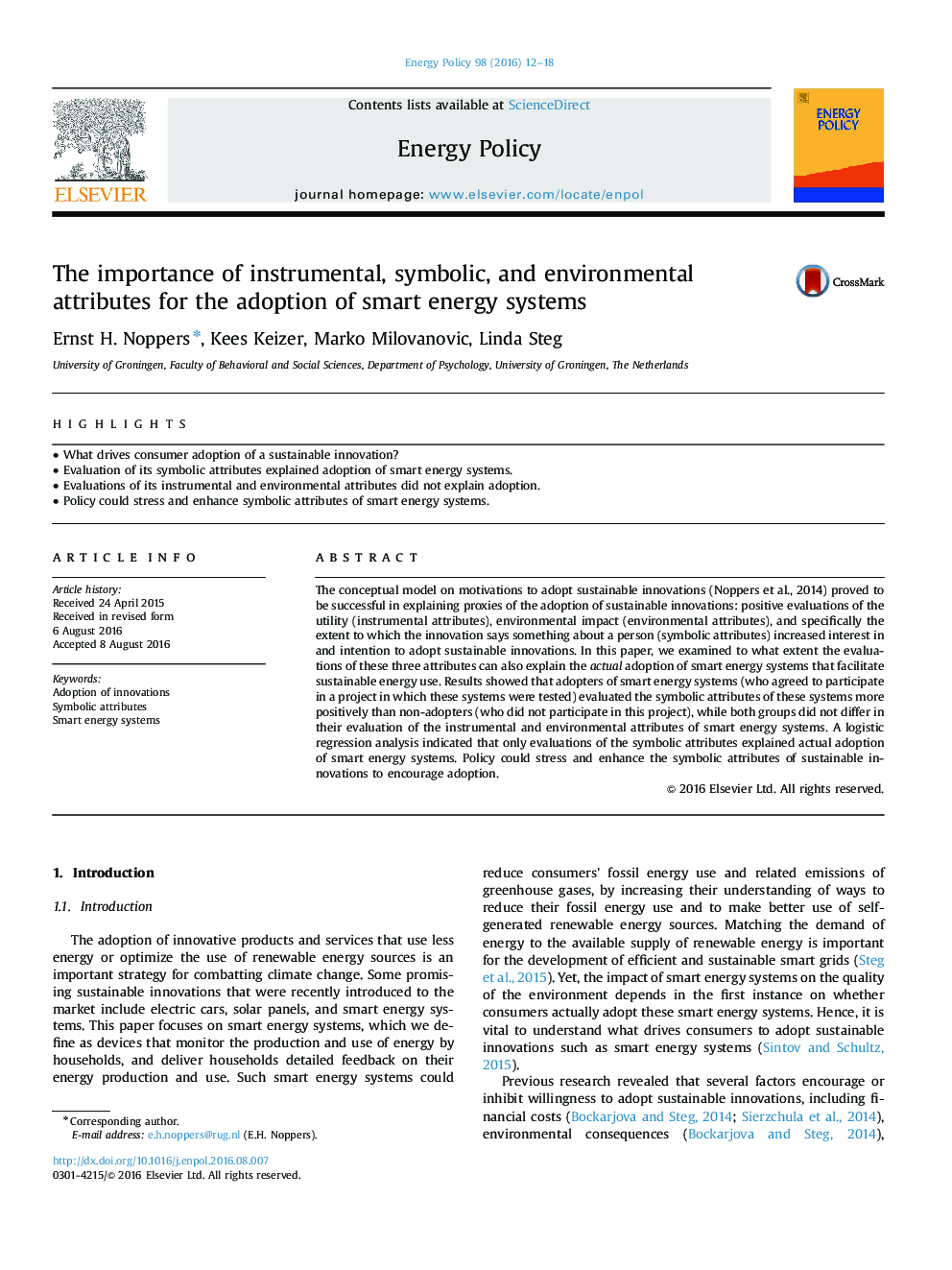| Article ID | Journal | Published Year | Pages | File Type |
|---|---|---|---|---|
| 7398351 | Energy Policy | 2016 | 7 Pages |
Abstract
The conceptual model on motivations to adopt sustainable innovations (Noppers et al., 2014) proved to be successful in explaining proxies of the adoption of sustainable innovations: positive evaluations of the utility (instrumental attributes), environmental impact (environmental attributes), and specifically the extent to which the innovation says something about a person (symbolic attributes) increased interest in and intention to adopt sustainable innovations. In this paper, we examined to what extent the evaluations of these three attributes can also explain the actual adoption of smart energy systems that facilitate sustainable energy use. Results showed that adopters of smart energy systems (who agreed to participate in a project in which these systems were tested) evaluated the symbolic attributes of these systems more positively than non-adopters (who did not participate in this project), while both groups did not differ in their evaluation of the instrumental and environmental attributes of smart energy systems. A logistic regression analysis indicated that only evaluations of the symbolic attributes explained actual adoption of smart energy systems. Policy could stress and enhance the symbolic attributes of sustainable innovations to encourage adoption.
Related Topics
Physical Sciences and Engineering
Energy
Energy Engineering and Power Technology
Authors
Ernst H. Noppers, Kees Keizer, Marko Milovanovic, Linda Steg,
